Alarms are something a lot of people can’t do without. Scheduled alarm sounds always alert us to specific times. Most people utilize alarms for morning wake-up calls, but they can be scheduled for any time of day. For example, alarms can be useful for scheduling lunch and coffee breaks during business days. You don’t need to take alarm clocks to the office because there are a few ways you can set up alarms on Windows 10 laptops and desktops.
Windows 10 is more flexible than many typical alarm clocks. That platform includes built-in apps and tools you can set up alarms with. Alternatively, you can utilize some great third-party alarm clock software packages for Windows 10. Below we tell you how to set an alarm on Windows 10 with five different methods.
Method 1: Set an Alarm With Alarms and Clock
Alarms and Clock is a time app that comes pre-installed with Windows 10. That app includes 10 alternative alarm sounds. That might not be a huge choice compared with some alternative apps. However, Alarms and Clock is a straightforward to use and readily available Windows 10 app nonetheless. You can use alarms in Windows 10 with that app as follows.
Step 1: First, click the “Start” button to open Windows 10’s app menu.
Step 2: Click the Alarms & Clock app near the top of the Start menu.
Step 3: Select the Alarm tab in the app shown directly below.
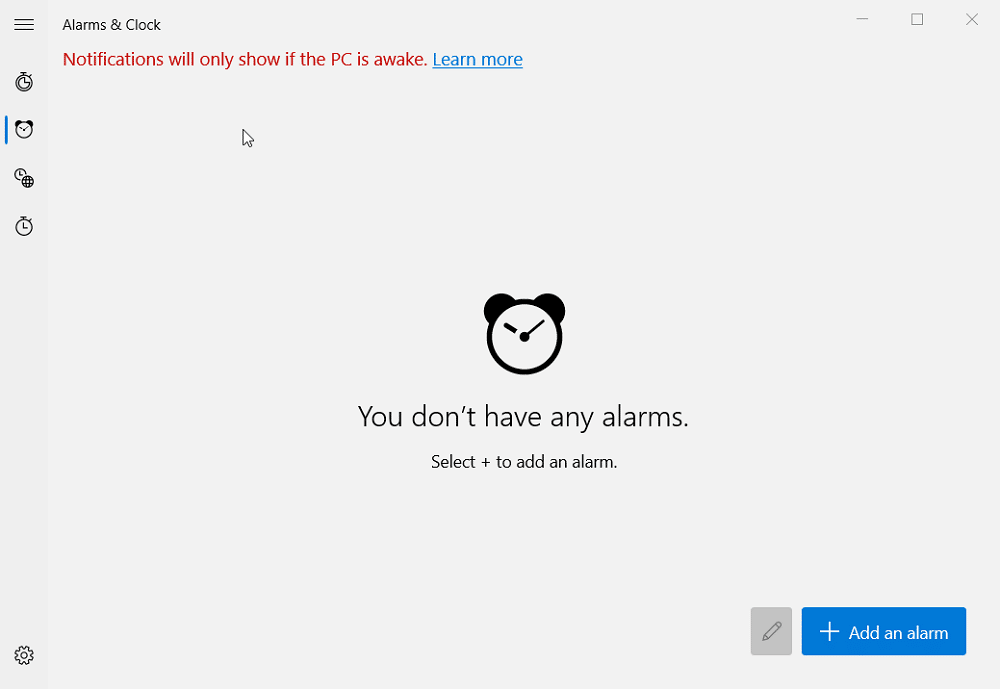
Step 4: Press the “+Add an alarm” button to bring up the alarm options.
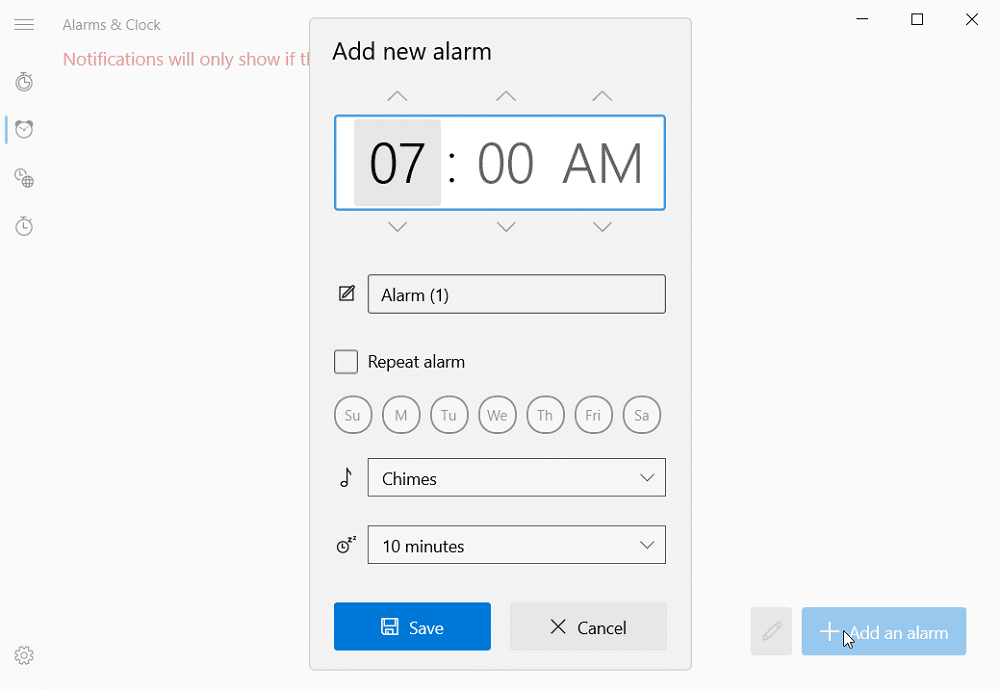
Step 5: Click the up and down arrow buttons around the clock to set a time for the alarm to go off at.
Step 6: Then click the “Alarm Chime” drop-down menu to select a sound.
Step 7: Select a snooze option by clicking the “Snooze Time” drop-down menu.
Step 8: Click the “Repeat alarm” option if you want the alarm to repeat on specified days. Then select the days to repeat the alarm.
Step 9: Enter a title for the alarm in the text box.
Step 10: Press the “Save” button. Then the Alarm tab will include your alarm as in the snapshot below.
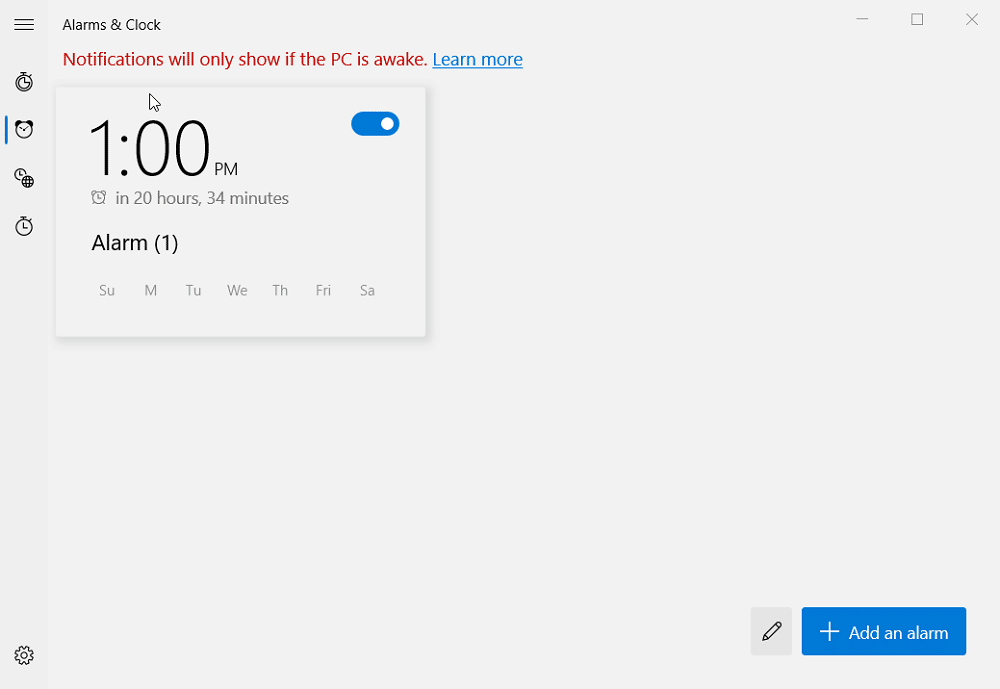
Step 11: If you need to change your alarm, right-click it and select the “Edit” option.
Now your new alarm will go off at its specified time. Note, however, that Windows 10 notifications also need to be enabled for the alarms to go off as expected. So, make sure you have notifications enabled in Windows 10 as follows.
Step 1: Press the Windows keyboard key and S at the same time to bring up a search utility.
Step 2: Type the keyword notifications within the search box.
Step 3: Click Notifications & actions settings to open the window in the snapshot directly below.
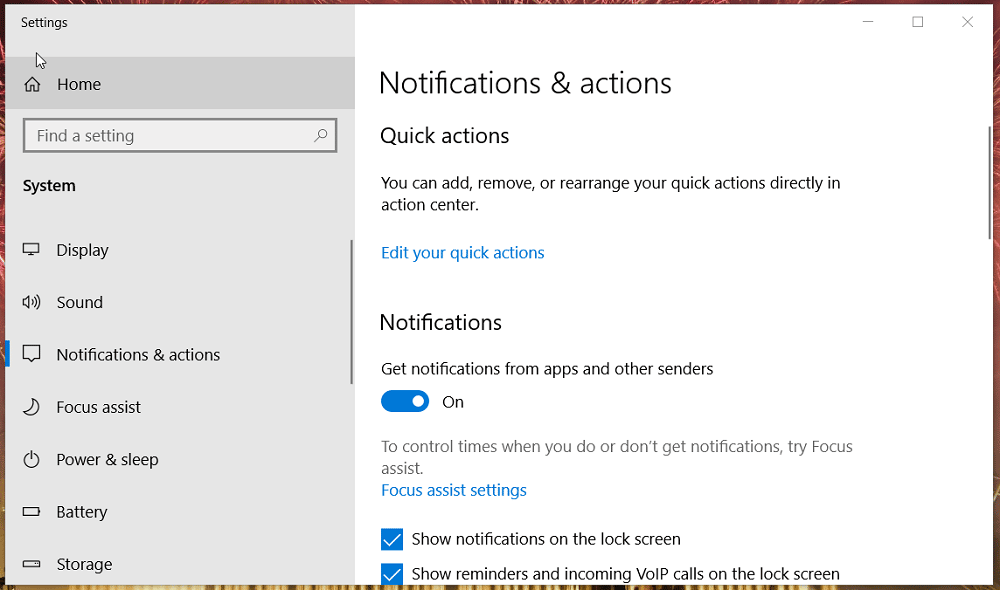
Step 4: Now toggle on the “Get notifications from apps and other senders” option if it’s off.
Method 2: Set an Alarm With Cortana
Alternatively, you can utilize the Cortana app to set up alarms. Cortana sets up the alarms that are triggered by the Alarms & Clocks app. This is how to use alarms in Windows 10 using with Cortana.
Step 1: Press the Windows key on your keyboard to open the Start menu.
Step 2: Then click Cortana on the Start menu’s app list to open the window below.
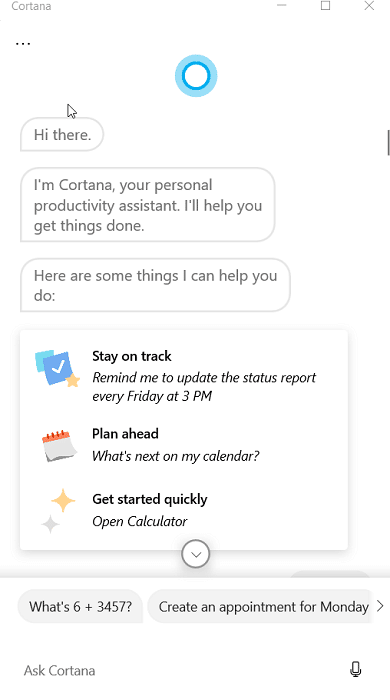
Step 3: Input set the alarm in Cortana’s text box and press the Enter key. Cortana will ask, “What time should I set?”
Step 4: Then type in a time in 24-hour clock time format, such as 13:30, within the text box, and press the Enter keyboard key. Thereafter, Cortana will say it has turned on an alarm for a specified time, as shown directly below.
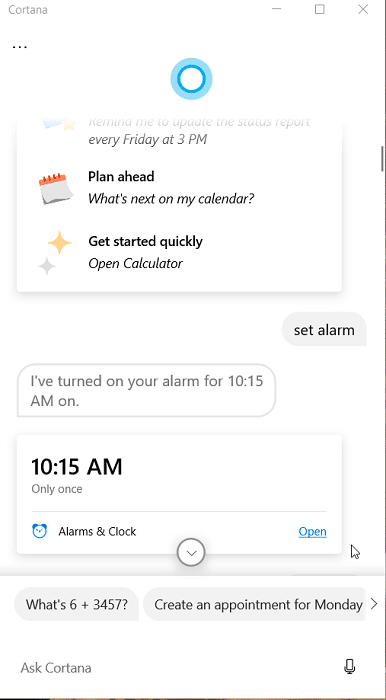
Step 5: If you want to configure the alarm further, click the “Open” link for Alarms and Clocks. Then you can right-click the listed alarm and select “Edit” within the app.
If you prefer, you can set the alarm with voice commands so long as your PC’s microphone is enabled. Click the “Speak with Cortana” microphone button beside the app’s text box. Then say “set alarm” reasonably loudly. Cortana will vocally ask you what time to set the alarm. After that, tell Cortana the time you want the alarm set for. Make sure you include PM or AM in your vocal time command.
Method 3: Set an Alarm With Task Scheduler
Task Scheduler is a very useful Windows 10 utility with which you can schedule various tasks. You can set up alarms with that tool by scheduling tasks that play audio files at specified times. This is how to set up alarm on Windows 10 with Task Scheduler.
Step 1: First, either click the search box on Windows 10’s taskbar or the magnifying glass button for it beside the Start menu.
Step 2: Type in the keyword Task Scheduler within the search box to find that utility.
Step 3: Click Task Scheduler to open the window for it shown directly below.
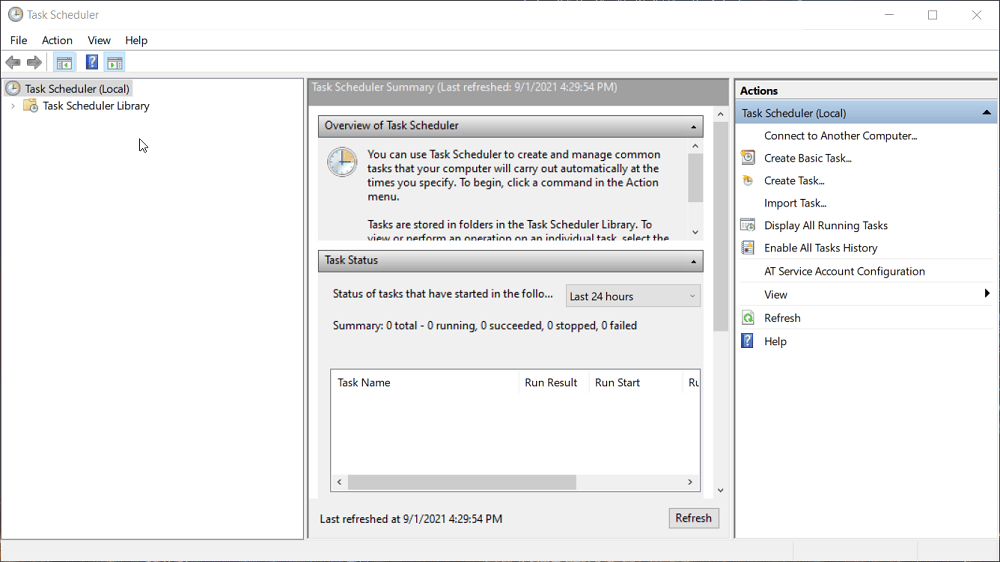
Step 4: Next, click “Create Basic Task” on the right side of Task Scheduler to open the window in the screenshot directly below.
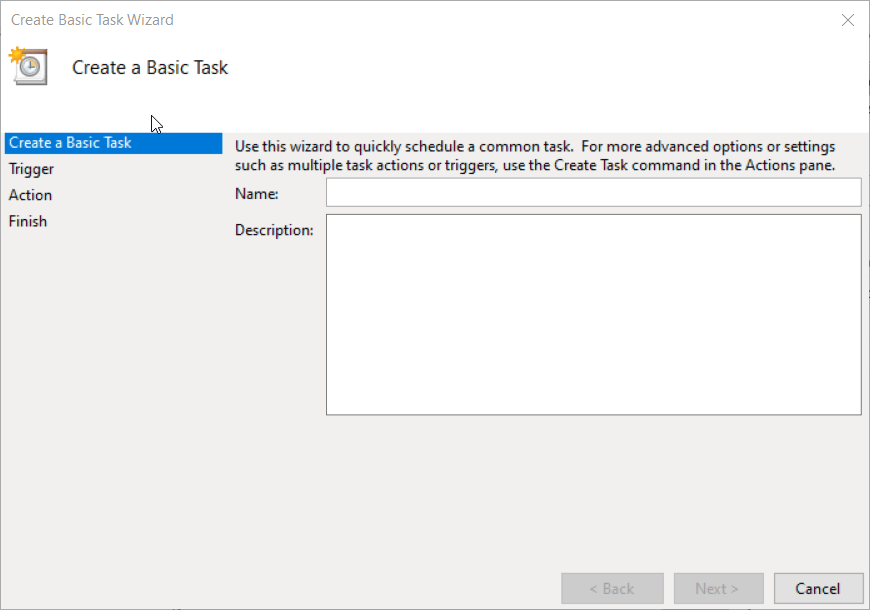
Step 5: Enter a title for the alarm task in the Name text box, and click the “Next” option.
Step 6: Select the “One time” radio button, and click “Next” to continue.
Step 7: Then select a date and specific clock time for the alarm to go off at, and click the “Next” option again.
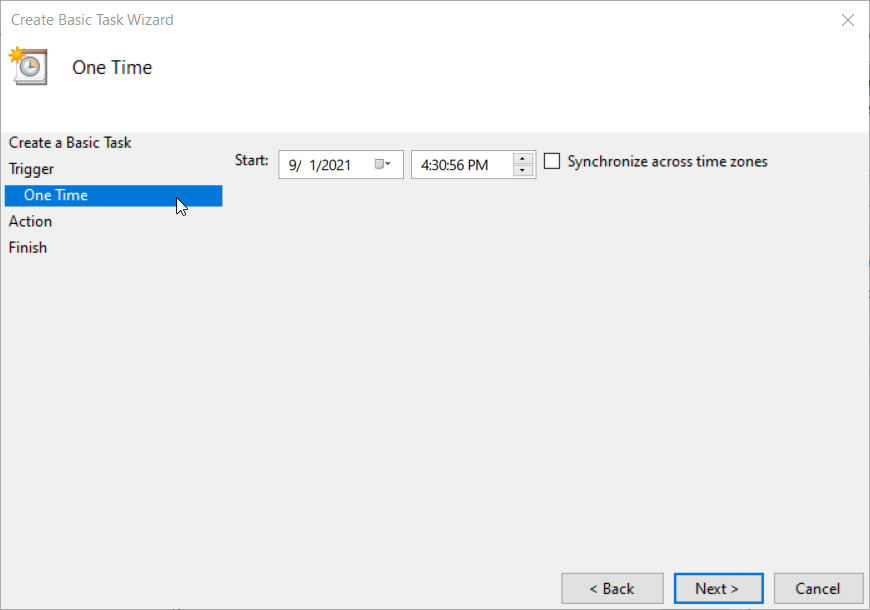
Step 8: Click the “Start a program” option, and press the “Next” button to go to the next step.
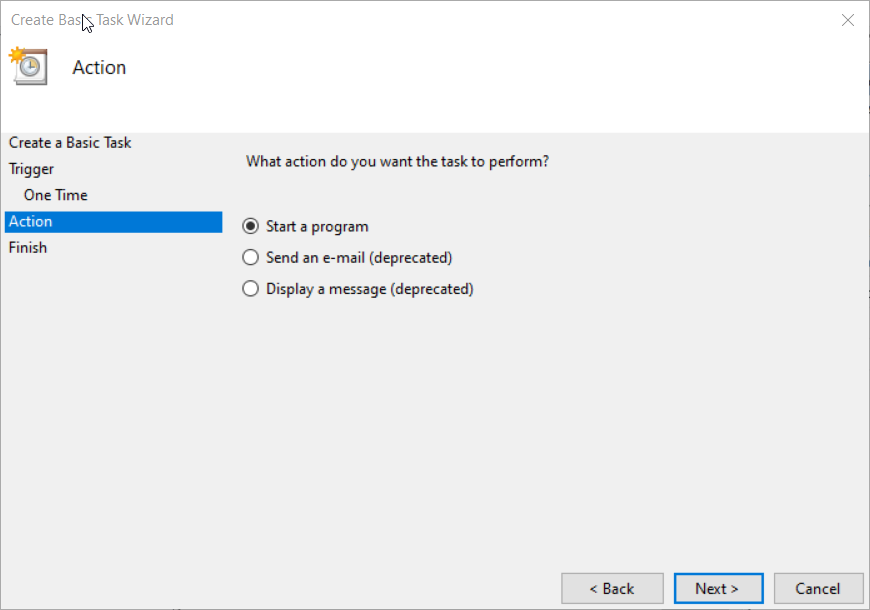
Step 9: Now click “Browse” for the Program/script path box to bring up an Open window.
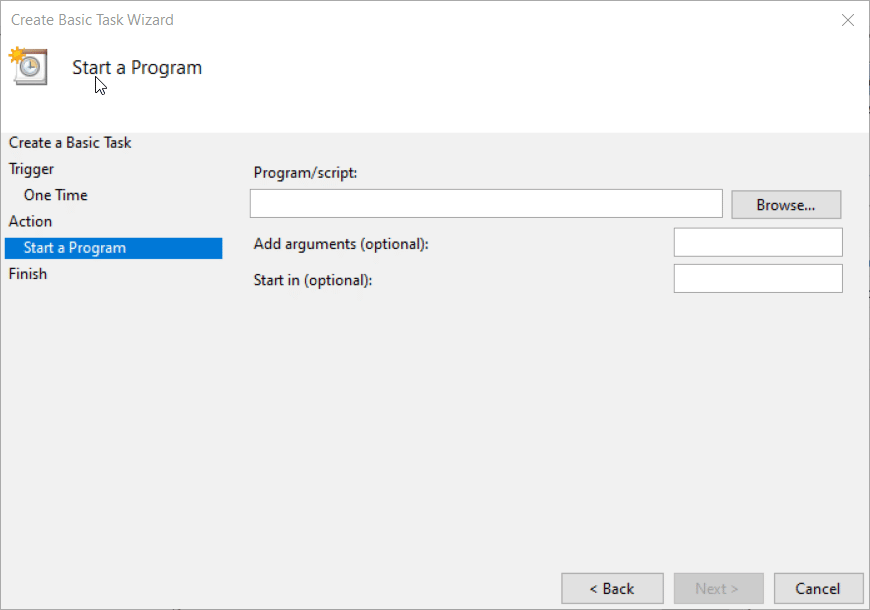
Step 10: Browse to the C:\Windows\Media folder path in the Open window. Then select an alarm sound or other audio WAV file from that folder.
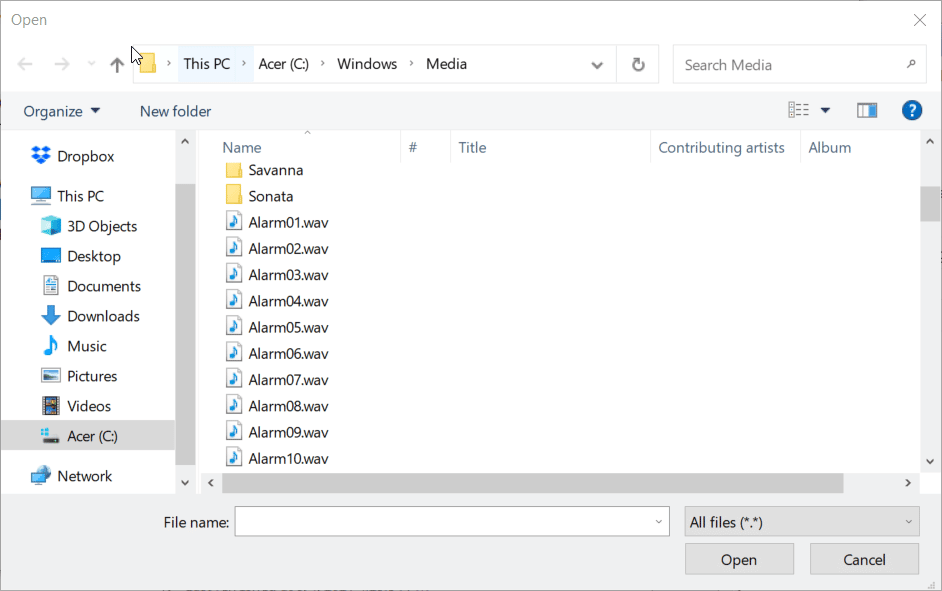
Step 11: Press the “Open” button.
Step 12: Click the “Next” button a final time.
Step 13: Select the “Finish” option to add the new alarm task.
Now all you’ll need to do is wait for your alarm to go off at the scheduled time. When it goes off, your default Windows 10 media player will automatically open and play the selected alarm audio file.
You don’t have to select a WAV audio file within the specified Media folder. You could set up a task to play a music song instead. To do so, you would need to select a music file in a different folder after clicking the Program/script box’s “Browse” button.
You can also set up a recurring alarm instead of a one-off one with Task Scheduler. To do so, you’ll need to select a “Daily” or Weekly” trigger option within the Create Basic Task Wizard window. Then you can enter a value for the “Recur every” option shown directly below.
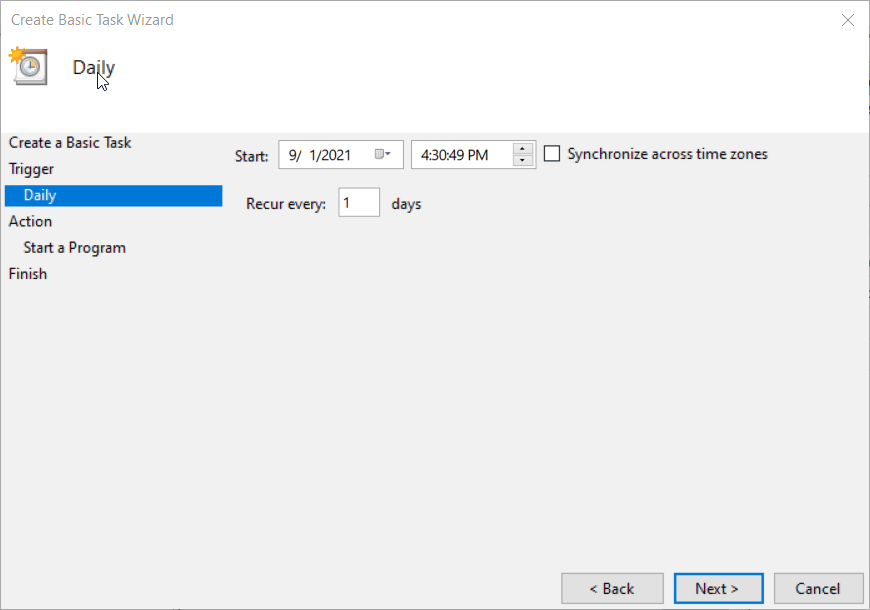
Method 4: Set an Alarm With an Alarm Clock Web App
There are also a few alarm clock web apps with which you can set alarms within your Windows 10 browser. The alarm clock at the OnlineClock.net website has a good variety of options. That alarm clock provides a wider choice of sounds than the Alarms and Clocks app. This is how you can set the alarm with that web app.
Step 1: First, open a Windows 10 browser.
Step 2: Open the OnlineClock.net alarm page shown directly below in the browser.
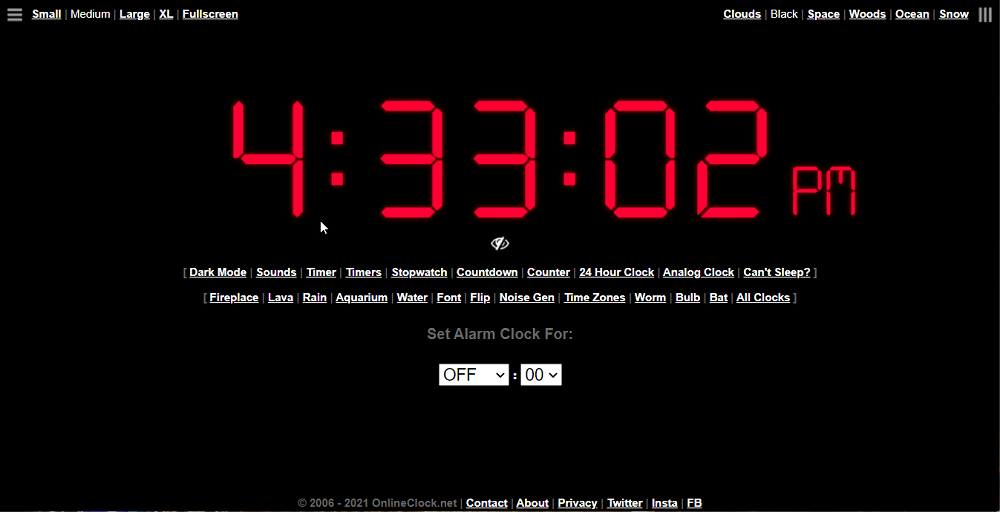
Step 3: Then click the “Sounds” link.

Step 4: Click a sound there to listen to a preview for it. Press the “Save as alarm” button to save the sound.
Step 5: Now click the back button on your browser to return to the previous page.
Step 6: Press the “Return to the Main Clock” button.
Step 7: Click the “Set Alarm Clock For” drop-down menu to select a time.
Step 8: Wait for the alarm to go off. To stop its ringing, press the “Alarm Off” button.
Note that your browser and the OnlineClock.net page need to remain open for it to work. So, don’t close the browser or the OnlineClock.net web app when you’ve set the alarm.
Method 5: Set an Alarm With Free Alarm Clock
There are many third-party alarm apps available for Windows 10. Free Alarm Clock is a freely available third-party alarm program for Windows 10 that’s better than Alarms & Clocks. It includes a wider choice of alarm sounds and enables you to select music files saved on your PC.
You can download Free Alarm Clock from its webpage. Click the “Installation Package” button to download the program’s setup wizard. Then open Free Alarm Clock’s setup wizard to install the software. You can set up an alarm with that software as follows.
Step 1: Open the Free Alarm Clock window shown directly below.
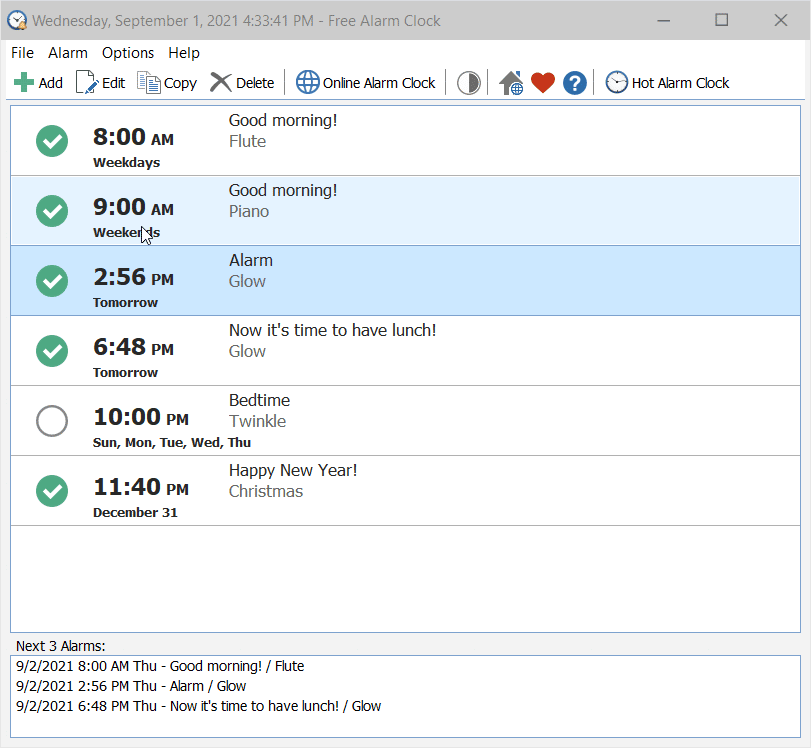
Step 2: Press the “Add” button to open the Alarm window.
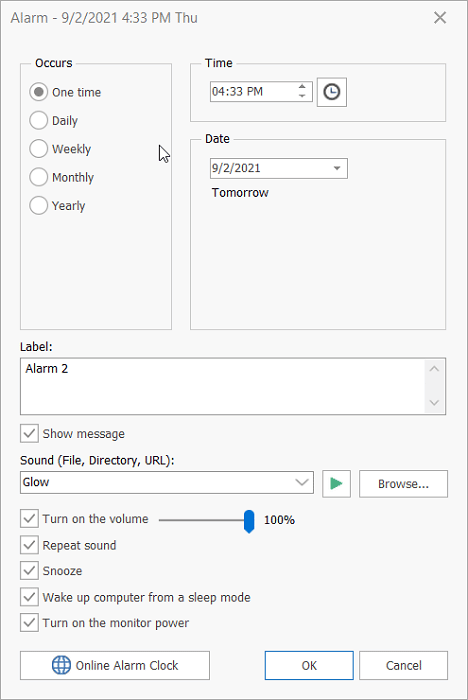
Step 3: Select the “One time” option to set up an alarm that goes off once only.
Step 4: Enter a clock time for the alarm in the Time box.
Step 5: Select a date for the alarm in the Date box.
Step 6: Click the “Sound” drop-down menu to select audio for the alarm. Alternatively, click “Browse” to select a sound file in a folder for the alarm.
Step 7: All other optional settings are selected by default. Click those options’ checkboxes to deselect them according to your preferences.
Step 8: Then press the “OK” button to save your alarm.
Free Alarm Clock must be running for its alarms to go off. The program is configured by default to start with Windows. Exiting its window does not close the program. You can close Free Alarm Clock by right-clicking its system tray icon and selecting the “Exit” option.
FAQs
1. Are the above methods only applicable to Windows 10?
The first two methods are only applicable to Windows 10. However, the fourth method is a universal one that’s applicable to all operating systems. Methods three and five apply to Windows platforms dating back to XP.
2. Do Alarms and Clock’s alarms work when that app is closed, or a Windows 10 PC is locked?
Yes, the alarms will work when the app isn’t open, or a Windows 10 PC is locked. Note, however, that the alarm notifications only work when a PC is active (awake).
3. Is the timer in Alarms and Clock an alarm feature?
The timer in Alarms and Clock counts down a specified time and then displays a notification with a sound. So, that feature is more like an oven timer than an alarm clock.
4. Does Windows 10’s system tray clock have an alarm clock feature?
There isn’t any alarm option on the system tray’s clock and calendar. Nor can you select any alarm options for that clock within Windows 10’s Settings app. Therefore, there isn’t a specific system tray alarm clock feature. However, the Alarms and Clock app is based on your Windows 10 system tray clock’s time, as are third-party alarm software packages.
Conclusion
So, that’s how to set up alarm on Windows 10 for important times with Alarms and Clock, Cortana, Task Scheduler, Free Alarm Clock, and the OnlineClock.net web app. Windows 10’s Alarms and Clocks app might be sufficient for most users. However, users who want more audio options for alarms will prefer methods three, four, and five.